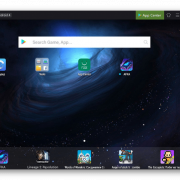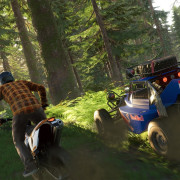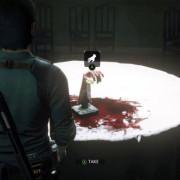First-person view
Содержание:
- Man On Man
- The Waiting Game
- Consoles Strike Back
- Hear The Call
- First, Second, and Third Person in Writing
- Telling Stories
- 3D Universe
- Pushing Polygons
- Spartan Pride
- Maze Runner
- The Real World
- What Are Second Person Pronouns?
- Engine Wars
- Weird Stuff
- Console Party
- See Through Your Eyes
- First-Person Point of View
- Summary: What is the First, Second, and Third Person Perspective?
- HD Universe
- Let’s Get Experimental
- What Are First Person Pronouns?
- Questions About the First Person
Man On Man
Competitive multiplayer was a big part of first-person gaming from the very beginning, but the rise of the national Internet infrastructure made finding people to play with incredibly easy in the late 1990s, especially on college campuses wired with lightning-fast T1 lines.
Epic dropped Unreal Tournament in 1999, one of the first purely multiplayer-focused FPS titles. The skimpy singleplayer was an excuse to train players against bots, but the meat was the online and LAN play. The game was massively successful and inspired others to work on similar projects.
iD’s take was Quake III Arena, released later the same year. Eschewing tight corridors for open arenas optimized for multiplayer, it was a beautifully tuned game with a high skill ceiling and featured an emphasis on fast movement.
In a similar vein was Dynamix’s Starsiege: Tribes, which billed itself as the “world’s fastest shooter.” The game put players in control of armed mechs in huge outdoor environments, and players discovered a movement glitch called “skiing” that enabled them to not lose momentum by timing jumps while descending a hill. Doing that let you jet across the map insanely fast.
The Waiting Game
In the early days, companies pumped out games fast and furious. The pause between Wolfenstein 3D and Doom wasn’t even a year. But as designers got more ambitious and technology got more complex, FPS titles took longer and longer to make. The industry entered a period of long delays and release dates being postponed over and over.
John Romero tried to hop on the narrative wagon with 2000’s much-hyped, much-delayed Daikatana. Originally intended to be completed from start to finish in seven months and released for Christmas 1997, the project already looked dated and had to switch to the Quake II engine midway through development, a task that took over a year in itself. Throw in an E3 demo that ran at 12 frames per second and you got a game that wasn’t worth the wait.
3D Realms intended Prey to be at the cutting edge of technology when they started development in 1995, serving as the linchpin for the company’s own proprietary engine. Unfortunately, they couldn’t finish the job and the game was shelved in 2000, only to be brought out of hibernation and eventually released to solid sales. The 2017 franchise reboot is pretty much unrelated but still very solid.
The king of first-person vaporware for many years was Duke Nukem Forever, which was announced in April of 1997 and finally released in 2011 – a development period of 14 years. During that time, the game shifted engines multiple times and when it came out was pretty harshly savaged by critics, putting the final nail in the franchise.
The only title that FPS gamers have been waiting longer for is Valve’s Half-Life 3, which may never happen in our lifetimes. Valve is notoriously closed-mouthed about internal development projects, and the series hasn’t seen a new game since Episode 2 in 2007.
Consoles Strike Back
Halo led the way for a first-person shooter renaissance on consoles, as developers finally figured out workable replacements for the traditional keyboard and mouse.
2000 saw the PlayStation 2 launch with an FPS – a first for consoles. TimeSplitters, created by Free Radical – a studio made up of ex-Rare employees who worked on their last-gen shooter – was a critical hit, and the sequel was even better. The introduction of a level editor gave the the game a ton of replayability.
One of the biggest risks in the genre came in 2002, when Nintendo handed over the reigns of their traditionally side-scrolling Metroid series to an American developer, Retro Studios. The resulting GameCube game, Metroid Prime, took the franchise in an exciting direction, emphasizing exploration and movement over shooting willy-nilly. Two sequels followed, with the Switch getting ready to host a third as I write this.
Hear The Call
The Call Of Duty franchise started with the World War II game boom of the early 2000s. Published by Activision, the first few installments in the series were competent, realistic infantry simulators that put the focus on AI squadmates. But 2007’s Call Of Duty 4: Modern Warfare marked a turning point for the franchise that would make it one of the most popular on the market.
The game took players into the world of asymmetric warfare, facing off against terrorists and insurgents across the Middle East and Eastern Europe. A potent storyline with some unexpected emotional beats, combined with innovative and responsive multiplayer, made it the year’s best-selling game.
The franchise continues to chug onwards, with recent installments moving it into the future and outfitting soldiers with superhuman movement abilities. It’s ironic that a series that started with realism has become what it has, but that doesn’t stop the games from selling.
First, Second, and Third Person in Writing
 In writing, the writer may choose to write from different points of view. The point of view he or she chooses is evident through his or her use of pronouns.
In writing, the writer may choose to write from different points of view. The point of view he or she chooses is evident through his or her use of pronouns.
Writing in first person: Literature in the first person point of view is written from the speaker’s perspective. This point of view uses first person pronouns to identify the speaker/narrator. First person point of view is generally limited in that the audience only experiences what the speaker/narrator himself experiences.
Writing in third person: Literature in third person point of view is written from an “outside” perspective. This point of view uses third person pronouns to identify characters. In third person writing, the narrator is not a character in the text. Because of this, he can usually “see” what happens to all of the characters.
Writing in second person: In non-fiction writing, a speaker will often switch between pronouns. Writers do this only for effect. For example, if a speaker wants to be clear and “get through” to the audience, he might say “you” (second person) throughout the text even if the text is mostly in third person. Again, this is strictly for rhetorical effect. Experienced writers use this as a literary tool.
Telling Stories
Most early first-person shooters were pretty light on the narrative. Players shot everything that moved and solved simple puzzles every so often, but characterization and plot weren’t a major concern. The release of Half-Life in 1998 forced the industry to up their game in a serious way. Valve’s breakthrough featured physicist Gordon Freeman, a silent protagonist as commonly seen in Japanese RPGs, working his way through the Black Mesa lab in a seamless world with no cutscenes. It made environmental storytelling one of the key elements of the genre.
There were some downsides to Valve’s approach, though – gone was the nonlinear, player-driven style of earlier games, transformed into a more linear experience that not many developers could pull off as well.
One of the most critically lauded attempts came with the Bioshock series, all three of which transplanted players into fascinating, carefully-built worlds where they had to wrestle with moral and ethical quandaries while blasting foes and using supernatural powers.
3D Universe
With the advent of improved 3D graphics and detailing, first-person view was introduced in GTA III.
First-person view as seen through the crosshairs of a Sniper Rifle in GTA III.
in two forms, the ability to look around in first person view, and the ability to aim a weapon. This was carried over to Grand Theft Auto Vice City, and later Grand Theft Auto San Andreas (the latter with the exception of free look). The free look ability is triggered on consoles by moving the right analog stick of the controller while unarmed. In the PC versions, the feature is available if the control scheme is set to ‘Classic’, and by default using the Numpad 5, 6, 7, and 8 keys. First-person view is also standard as an available viewpoint when the player is inside a vehicle.
First-person aiming with a gun is crucial, particularly for sniper rifles, allowing the player to accurately aim and shoot at targets from afar, while avoiding the use of an auto-aim. Similarly, certain assault rifles (i.e. the M16/M4 and Ruger) and rocket launchers allow the player to aim in first person view as they hold the aiming button or key. Similarly, the camera introduced in GTA Vice City allows the player to take pictures from a first-person viewpoint. First-person view for assault rifles was eliminated in GTA San Andreas in favor of an over-the-shoulder aiming system.
Pushing Polygons
The primary limitation for games built on the Doom engine was its insistence on using sprites for character and object art. They never quite meshed with the primitive polygonal worlds, but computers of the time couldn’t render both environment and inhabitants readily in 3D. Once that changed, things could get very interesting.
iD was once again the developer to lead the way with the 1996 release of Quake. Initially intended to be a 3D brawler inspired by Sega’s Virtua Fighter arcade game, the ambitious title morphed into something the team was more comfortable with – a shooter in a dark medieval world with music by Trent Reznor. Fully 3D environments gave players new movement options, and Quake embraced the concept of “rocket jumping,” using the blowback from your explosive weapons to launch your character high in the air.
There were contenders to the throne, though. In 1998, Epic released Unreal, which was built on their own engine and allowed for a number of features that were incredibly exciting. An editor that allowed for real-time geometry placement and a scripting engine made it a feast for modders, and over the next two decades the Unreal engine would grow into one of the industry’s most reliable pieces of middleware, not just for shooters.
FPS games made using the first version of the Unreal engine include Star Trek: Next Generation: Klingon Honor Guard and the adaptation of Robert Jordan’s Wheel of Time series.
Spartan Pride
After the success of Marathon, Bungie took some time off to explore other genres. But when they came back to the first-person shooter at the bequest of Microsoft, they would change the game forever. Halo: Combat Evolved was first revealed in 1999 and shipped as a launch title for the Xbox. Set in the 26th century, Master Chief battled a variety of aliens with tight controls and fun vehicles.
Halo added a number of innovations that made FPS play more doable on consoles. The most notable was probably the regenerating shield, which let players take damage and then heal up by just staying out of the action for a little bit. That made up for the decreased accuracy that playing with a controller gave. Local split-screen and LAN multiplayer was joined by Xbox Live play for the sequels.
Bungie developed two more Halo sequels before stepping away as well as a prequel and an expansion for Halo 3, and Microsoft gave the franchise to 343 Industries.
Maze Runner
The first real home computer FPS was MIDI Maze, released for the Atari ST by Hybrid Arts in 1987. It put players in the role of a Pac-Man like orb in a right-angled maze, able to move in any direction and shoot deadly bubbles at other Pacs.
What made MIDI Maze so fascinating was its networking capability. Using the MIDI in and out ports typically delegated to sound recording and processing, the game could communicate with as many as 16 players in the same maze (although anything over 4 typically caused massive amounts of lag). Competitive deathmatches were fun, especially because users could create their own mazes with a simple text editor.
In 1991, a version of MIDI Maze was released for the original Game Boy under the name Faceball 2000. Using a curious hardware hack, it enabled up to 16 of the portable consoles to be networked together for massive multiplay. But this game was a curiosity more than anything.
The Real World
As technology improved, the simulated world of first-person shooters became more and more realistic. Gamers weren’t satisfied moving around a flat plane shooting and flipping switches. They wanted to really inhabit these fantasy worlds, and to do that developers needed physics. That would open a whole new can of worms, both good and bad.
One of the first games to really push physics as a major part of the experience was Jurassic Park: Trespasser. As protagonist Anne, you could put your arm out and roughly manipulate objects like boards and boxes that responded with simulated collisions based on the laws of motion we live with every day. The problem was that their model wasn’t accurate enough, using invisible boxes around objects for collisions and making precise manipulation nightmarishly un-fun.
1998 saw the release of Tom Clancy’s Rainbow Six, licensing the popular military intrigue author’s fictional universe in service of a tactical shooter that reminded players that even a single bullet could be deadly. Dispensing with the run-and-gun feel of Doom, Rainbow Six required you to plan your assault carefully, as a single mistake could be fatal. The game was a huge hit and inspired a staggering ten sequels.
The over-the-top craziness of Quake and its children also saw a reaction from players who wanted something a little more grounded. Counter-Strike was released in 1999 as a Half-Life mod that pit teams of terrorists and counter-terrorists against each other in objective-based missions. One of the game’s biggest breaks with tradition comes in how it handles death: there’s no respawning in CS. Dead players are banished to spectate until a new round starts, meaning that every action matters. It became wildly popular and launched a competitive scene of its own.
On consoles, 1999 saw the release of the first game in the Medal of Honor series. With a story by Steven Spielberg, the game put players in the thick of World War II, with tense skirmishes featuring some of the most advanced enemy AI of the time. The game launched a franchise that would continue until 2012 on multiple platforms.
What Are Second Person Pronouns?
 Second person pronouns always refer to the addressees of the speaker himself.
Second person pronouns always refer to the addressees of the speaker himself.
When you are writing, a good way to think about the second person’s point of view is that it addresses the reader (as I just did in that sentence).
Second person pronouns are only used when the speaker is making a statement to the addressee, i.e., to someone.
Second Person Pronoun List:
Here is a list with examples of the second person words we use in writing and speech.
- you (subject, singular/plural)
- you (object, singular/plural)
- yours (possessive, singular/plural)
- your (possessive, modifying a noun, singular/plural)
Note: In each of these examples, “you” can be an individual (singular) or multiple people (plural).
Engine Wars
After iD came to fame with the Doom engine, other software developers saw a path to fame and fortune by creating their own 3D engines that they could reuse and license. Here’s a rundown of some of the most notable.
The “Pie in the Sky” engine was primarily the work of programmer Kevin Stokes, who used it for first-person shooters like Lethal Tender and Terminal Terror. They would then sell the tool at retail as the 3D Game Creation System, which was bought and used by a number of small teams that created games like Red Babe and the surreal hand-drawn Pencil Whipped.
Out of nowhere came a small group of developers from Croatia named “Croteam,” who boiled up their own engine to power Serious Sam, a fast-paced retro-styled run and gun title that boasted massive numbers of enemies and silky-smooth performance.
German developers CryTeam unveiled their CryEngine in 2004’s Far Cry and quickly embraced a reputation as only caring about top of the line computers. They continued to evolve the engine with Crysis and its sequels, which delivered astonishing, near-cinematic realism.
Weird Stuff
The golden age of first-person shooters saw some pretty unusual takes on the genre, as everybody and their mother wanted to cash in. Forbes Corporate Warrior is, on the package, a guide to modern business. In practice, it’s one of the worst FPS games of all time, letting gamers wield “Ad Blasters” and “Marketing Missiles” to take down rival corporations
In 1996, the General Mills corporation hired developers Digital Café to create a free game to promote their cereal Chex. The result was Chex Quest, a beloved blaster built in the Doom engine that lets you blast enemies with milk and cereal. Amazingly, the game received a pair of sequels in 1997 and 2008.
Terror In Christmas Town, made with the Pie in the Sky engine, is a creepy, primitive holiday-themed game that tasks you with defeating an evil polar bear who has abducted Santa Claus.
The doomed 3DO system saw the release of Cyberdillo in 1996, an ostensibly humorous shooter casting the protagonist as a roadkill armadillo enhanced with mechanical parts and set on a mission of vengeance. The game’s jokes included a “bone flute” weapon that made you go blind if you played it.
2000’s unusual Catchumen was developed by N’Lightning Software and stands as one of the most expensive Christian video games ever made, with a development cost of nearly a million dollars. The FPS put you in the shoes of a Roman student who has to venture into a series of catacombs to rescue friends and smite Satan. When you “kill” human enemies in the game, they fall to their knees in prayer.
Console Party
First-person shooters became one of the leading reasons to game on a PC. Sure, the Super Nintendo saw a decent port of Doom, but without networking features the experience was pretty lacking. That didn’t stop some people from trying it, and a very unlikely developer managed to make a console FPS that cemented itself in the pantheon.
Early takes on the concept included 1994’s Battle Frenzy for the Genesis, Metal Head for the Sega 32X and Super 3D Noah’s Ark for the Super Nintendo – that one a Wolfenstein reskin with a Biblical theme that managed to be the only unlicensed SNES game ever released.
Rare was a British company primarily known for their Nintendo titles, including the criminally difficult Battletoads. Over three console generations, they’d proven their value to the big N and were selected with handling a game based on the James Bond license for the Nintendo 64. That game would be Goldeneye, and it would prove that a console-exclusive FPS could play with the big boys.
Goldeneye got over the limitations of the N64 (no online play, for one) with clever technical hacks. Although the game wasn’t terribly impressive graphically, even by the standards of the day, it was smooth as butter and offered a wide selection of maps and weapons.
They followed it up with Perfect Dark, which was an improvement in many ways with better graphics, tighter enemy AI and more multiplayer options. Unfortunately, the N64 simply wasn’t able to handle everything the game wanted to do and framerates suffered – a common problem on the underpowered consoles of the day.
Publisher Acclaim, notable for their investment in licensed titles, dipped a toe in the genre with Turok for the Nintendo 64. It became one of the most successful third-party games on the system, with developer Iguana Software pushing the machine to its limits, as well as challenging Nintendo’s reputation for family-friendly games.
Other first-person shooters on early home systems included the odd Jumping Flash, a Japanese game starring a robot rabbit who could perform massive vertical hops, Kileak: The DNA Initiative and an absolutely dismal South Park game for the PlayStation and the Nintendo 64.
See Through Your Eyes
Computer graphics was unexplored country in the 1970s. Once systems moved from punchcards to pixels on a screen, programmers started figuring out ways to make those pixels do interesting things.
Historians agree that the first real attempt at a first-person shooter came in 1973 with Maze War for the Imlac PDS-1 computers installed at the NASA Ames Research Center. Steve Colley was the first credited developer, and in the game multiple users could walk through a 3-D maze one “tile” at a time, shooting other players (represented as eyeballs) on sight. It was clunky, but nothing like it had ever been tried.
1974 saw Spasim, short for “Space Simulator,” on networked PLATO computers. This put you in control of a spaceship, not a human, but it rendered a 3D world in wireframe. Lest you think people were having fun with these early games, it’s important to note that the hardware of the time was so primitive that the screens would refresh once a second—a truly abysmal framerate. Later iterations of the game would become Panther, a tank simulation that would make the jump to the arcades a few years later.
First-Person Point of View
When we talk about ourselves, our opinions, and the things that happen to us, we generally speak in the first person. The biggest clue that a sentence is written in the first person is the use of first-person pronouns. In the first sentence of this paragraph, the pronouns appear in bold text. We, us, our,and ourselves are all first-person pronouns. Specifically, they are plural first-person pronouns. Singular first-person pronouns include I, me, my, mine and myself.
I think I lost my wallet! I can’t find it anywhere! Oh, I could just kick myself!
We could do ourselves a favor and make a reservation for our group.
Many stories and novels are written in the first-person point of view. In this kind of narrative, you are inside a character’s head, watching the story unfold through that character’s eyes.
When I wake up, the other side of the bed is cold.
Suzanne Collins, The Hunger Games
Summary: What is the First, Second, and Third Person Perspective?
Define first person: The definition of first person is the grammatical category of forms that designate a speaker referring to himself or herself. First person pronouns are I, we, me, us, etc.
Define second person: The definition of second person is the grammatical category of forms that designates the person being addressed. Second person pronouns are you, your, and yours.
Define third person: The definition of third person is the grammatical category of forms designating someone other than the speaker. The pronouns used are he, she, it, they, them, etc.
If this article helped you understand the differences between the three main English points of view, you might find our other article on English grammar terms helpful.
You can see our full list of English grammar terms on our grammar dictionary.
Contents
HD Universe
In Grand Theft Auto IV, the player’s camera phone can be used to look around in a first-person view. Like previous iterations in the series, sniper rifles require the player to aim down the scope in first-person, however they can be blind-fired from cover. It also returns as an available view for vehicles.
First-person view is available in Grand Theft Auto Online for PS3 and Xbox 360. However, this feature requires being a passenger of a vehicle. Vehicles such as the Police Riot and the Mule allow first person view when pressing B on Xbox 360 or O on PS3.
Idling in Grand Theft Auto V can cause game to switch to first-person view. The player will be able to randomly look around and also focus view on pedestrians, cars and sometimes random actions, like police chases, reminiscent of GTA San Andreas’ idle camera.
Enhanced Version
| This article or section refers to «enhanced version» content in the Xbox One, PlayStation 4, and PC renditions of Grand Theft Auto V and/or Grand Theft Auto Online, that is absent on the Xbox 360 or PlayStation 3 versions.For a complete list of the features of the «enhanced» version of Grand Theft Auto V, please see . |
Aiming Down Sights in GTA V.
First-person view has been expanded upon in the enhanced version of Grand Theft Auto V. The game can now be played entirely from first-person, with the addition of depth of field, motion blur, and an Aim Down Sights (ADS) system when firing weapons. Vehicles can be driven from a cockpit perspective with dynamic gauges and enhanced interior textures. Sunglasses and helmets with visors provide a polarizing filtered view. In first-person view, the lens flare effect seen in the game is removed. It can be best noticed when looking at the sun in both first and third-person views.
Let’s Get Experimental
As the first-person shooter genre became codified into one of gaming’s best known, flourishes of experimentation started to crop up around the edges. Teams began to question the tropes of the genre and ask if they had to have gruff protagonists, deathmatch or even guns.
2007’s Portal is credited for opening the floodgates. Armed with a “weapon” that opens holes in space between one location and another, protagonist Chell must escape a research facility stocked with deadly experiments by flaunting the laws of physics. The sequel added even more elements, and both games sang with smart, snarky humor.
That same year, EA released Mirror’s Edge, which was ostensibly a first-person shooter but one that prioritized movement over gunplay. Yes, protagonist Faith could wield firearms, but the meat of the game was running parkour-like through a massive world of rooftops, pipes and shafts with incredible freedom. It was a cult hit that inspired a 2016 sequel.
One stunning recent example is Superhot, an abstract shooter that takes the frenzied pace of a typical FPS and twists it: time only moves when you do. Stand still and bullets will hang in mid-air, but make one wrong move and they’ll plow right into your face. Each level is a tense ballet of split decisions and polygonal carnage and there’s nothing quite like it on Earth.
Other indie FPS games are going minimal. Devil Daggers keeps players in a single arena and overwhelms them with a tidal wave of demonic enemies, any of which can kill with a single hit. Players are scored simply on how long they can survive, and it’s a tense and unique experience that distills the genre down to its core.
Other interesting FPS experiments include PS3 title The Unfinished Swan, which starts in a completely white space that the player must fill with ink to explore, the abstract Lovely Planet and the hyper-realistic gun simulator Receiver that requires players to painstakingly perform each and every step of loading and prepping their weapons.
What Are First Person Pronouns?
First person pronouns always refer to the speaker himself. These pronouns are only used when the speaker is making a statement about himself or herself.
First Person Pronoun List:
Here is a list with examples of the first person words we use in writing and speech.
- I/we (subject, singular/plural)
- I prefer coffee to hot cocoa. (First person singular)
- We prefer burgers to pasta. (First person plural)
- me/us (object, singular/plural)
- Jacob embarrassed me.
- Jacob embarrassed us.
- mine/ours (possessive, singular/plural)
- The hat is mine.
- The hat is ours.
- my/our (possessive, modifying a noun, singular/plural)
- That is my hat.
- That is our hat.
Questions About the First Person
Is our first person? Yes, our is one of the first person pronouns.
Are you coming to our wedding?
Is you first person? No, you is a second person pronoun.
You are a great friend.
Is we first person? Yes, we is a first person pronoun.
- We are great friends.
- We polled this group of political observers and activists each week prior to the Iowa caucuses to produce the USA TODAY GOP Power Rankings and went back to them this week to ask who is the best choice for Trump’s running mate. –USA Today
Is my first person? Yes, my is a first person pronoun.
My glasses are broken.
Is they first person? No, they is a third person pronoun.
- They can’t find parking.
- For frugal travelers, there are some smart alternatives if they are willing to do a bit of homework. –The New York Times
Is us first person? Yes, us is one of the first person pronouns.
The president congratulated us.







